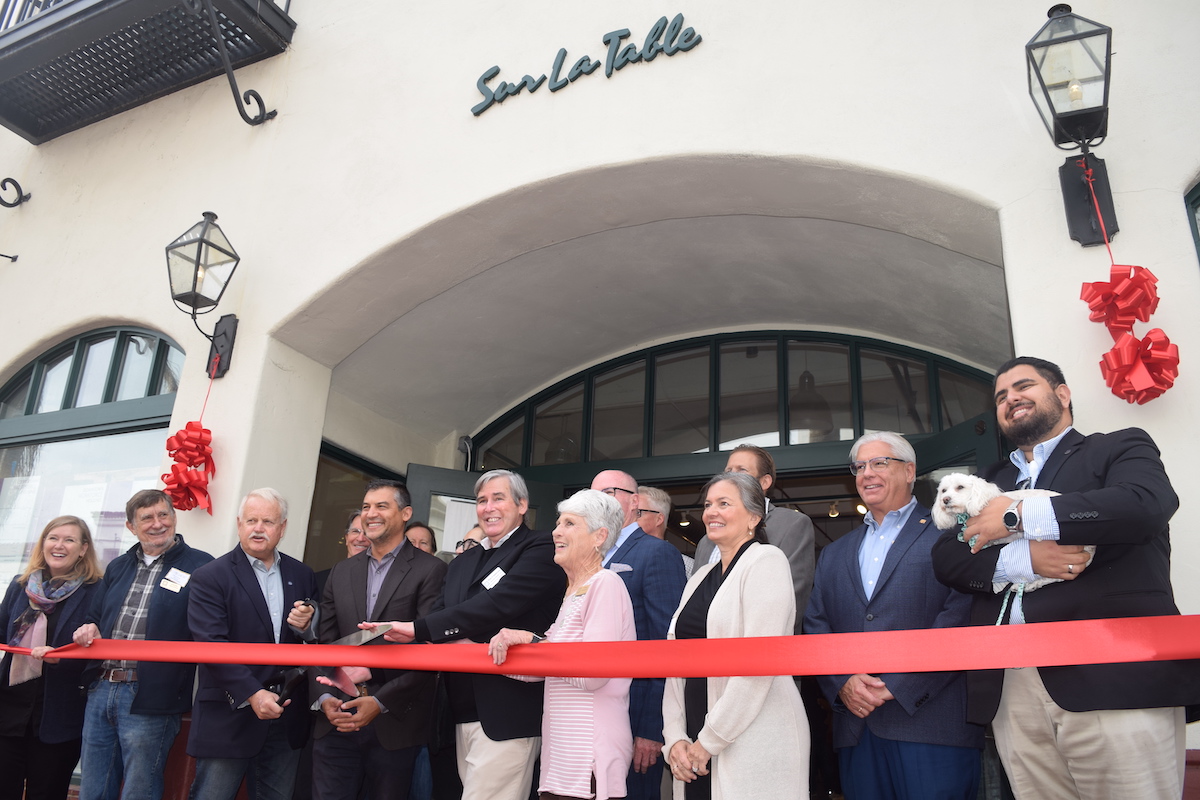Below-Market Workforce Housing Unveiled in Heart of Downtown Santa Barbara
Former Sur La Table Location on State Street Converted into 14 Studio Apartments in Test Model for Adaptive Reuse

The Housing Authority of the City of Santa Barbara unveiled a first-of-its-kind project Friday with 14 below-market studio apartments in the center of downtown at the former Sur La Table location on State Street. The adaptive reuse conversion — or rebuild from commercial retail to workforce homes — is one that many are hoping will serve as a blueprint for a new way to tackle the city’s growing housing crisis.
The project was made possible by the collaboration of the Housing Authority, city staff, and property owner Jason Yardi — director of the philanthropic organization the Yardi Foundation — who purchased the property in 2021 and took the leap of faith in trying to prove that affordable housing can, and should, be developed in existing commercial buildings.
When Yardi first bought the property, he thought about converting the upstairs spaces into two luxury penthouse apartments, but after learning that the city would support a high-density workforce housing option, he enlisted the help of consultant Ben Romo, who worked with the city and Housing Authority to get the project off the ground.
In December of last year, Yardi took it a step further, donating the property to the Housing Authority to allow for the construction of four studio units in the back half of the first floor and 10 studio apartments on the second floor. The design was created by local architectural firm Cearnal Collective and built by McGillivray Construction, using the building’s already existing infrastructure to create the new apartment living spaces with the original storefront left empty for potential commercial uses. In total, the development cost $3.1 million.
On Friday, the property was packed with city and Housing Authority staff and local dignitaries, including State Assemblymember Gregg Hart, County Supervisor Das Williams, Congressmember Salud Carbajal, Mayor Randy Rowse, and a handful of current and former city councilmembers, many of whom had shown support for the project along the way and all of whom were eager to see how it would looked when finished.
The studio units, while small (the three types of units range from 290 to 500 square feet), each have their own kitchen and bathroom and a window facing a communal hallway. The second floor has a communal area with windows overlooking State Street, giving a rare bird’s-eye view of downtown.
Rent rates will be set according to tenant’s income, with three units available for low-income renters at $965 a month, one unit for moderate-income renters at $1,610 a month, and 10 units for moderate-middle-income earners at $1,850 a month.

Rob Fredericks, the executive director and CEO of the city’s Housing Authority, was thrilled to reveal the development, which he said is proof that inventive affordable housing is possible in downtown Santa Barbara.
“Adaptive reuse from commercial to residential can be done and should be a model for making things work in our community,” Fredericks said.
He said he hoped that it would be “the first in a series of other developments” to show property owners and investors what can be done by reconfiguring existing buildings for high-density housing.
When the Housing Authority opened up applications for a handful of the units, Fredericks said there were more than 110 applications in three days, and in total there have been 200 applicants for all 14 units.
Congressmember Carbajal, who spoke at the grand opening and offered an official commendation to the Housing Authority, said that building affordable housing in the heart of downtown Santa Barbara was like “putting affordable workforce housing on Rodeo Drive, or on Fifth Avenue in New York.”
“It sets the tone, sets an example,” Carbajal said, “If you can have affordable workforce housing on State Street, you can do it anywhere.”
Others noted that the project was done in record time due to the fact that the developers and the city were on the same page trying to reach the same goal, and through Yardi, who was willing to use his investment as a testing ground for the good of the city’s residents.

Assemblymember Hart said that Yardi’s contribution was in line with Santa Barbara’s deep philanthropic efforts that led to projects like the harbor and Chase Palm Park, and he called on others who are in the position to help to be willing to put in that same effort. “This generation of property owners has a huge opportunity to step up,” Hart said.
Romo, who worked as Yardi’s consultant during the planning, gave credit to city staff and leadership, who he said often get a bad rap for slow and lengthy permitting and review processes. In this case, however, plans were rushed through in order to get the site built and ready to rent in 10 months.
But he urged the city to take more steps in order to make projects like these financially viable for developers who are strictly concerned with their bottom lines, otherwise the city may continue to see investors choose hotels over housing.
“They shouldn’t be expected to donate,” Romo said. “The city should incentivize more density to allow for housing developments that are more profitable than the alternative: a hotel.”
Residents are expected to move into the new development in December.

